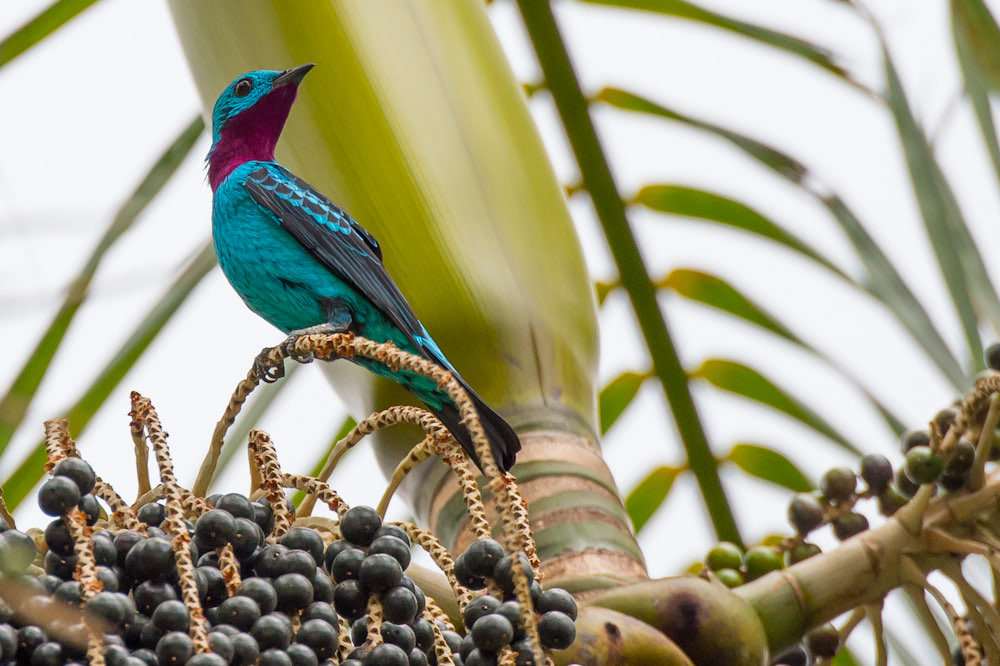You don't need to be a birdwatcher to appreciate the magnificent colors of the feathers of the male spangled cotinga flaunt. This bird finds its natural habitat in the canopy of the Amazonian Rainforest and has captivated the curiosity of scientists and bird fanatics for decades. Its dazzling blue body and deep red throat contain no pigment. The color effect is created by the shape of the material. This is known as structural coloration. Now researchers at the Harvard School of Engineering and Applied Sciences (SEAS) together with Korea Advanced Institute of Science and Technology (KAIST) have found a way to imitate these biological nanostructures and potentially replace the pigments we use today.
Current paints and dyes fade in intensity over time as they absorb light. Contrastingly, structural color amplifies certain wavelengths and, as a consequence, the color remains intact as long as the material does. This process happens in nature, and it is extremely difficult to reproduce, as each color relies on a very specific crystalline pattern. Peacocks and butterflies, for example, use photonic crystals or arrays of nanofibres that are precisely structured to establish the color. What makes the cotinga particularly interesting is the fact that its formal network is porous and much more random, resulting in a surface that looks like a sponge.
 A microcapsule shrinks as it dries, arriving at its final color.
A microcapsule shrinks as it dries, arriving at its final color.
SEAS and KAIST created “microcapsules filled with a disordered solution of nanoparticles suspended in water”. As these capsules dry out, they shrink, reducing the distance between the particles. In turn, these alterations in structure will reflect light differently and will result in a spectrum of color for our eyes to see.
Aside from generating color that is resistant to weathering caused by sunlight, this technology could hold great benefits in replacing synthetic dyes that are toxic and harmful to the environment. More applications could be found in electronic display technology. “The dream is that you could have a piece of flexible plastic that you can put graphics on in full color and read in bright sunlight” Says Professor Vinothan N. Manoharan, author of the study.
Sources: Asian Scientist, SEAS Harvard

Share your thoughts and join the technology debate!
Be the first to comment